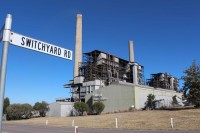Dangers of power privatisation demonstrated by Hunter Valley hostage situation
Wednesday 04 Sep 2019We all know that there is a long list of reasons why it’s important to keep energy assets in public hands.
This winter, the story of the future of two coal-fired power plants has demonstrated so many of those reasons.
In the Hunter Valley region of New South Wales, private operator AGL has been under relentless pressure from the NSW and Federal Government to keep the Liddell power plant up and running.
Back in 2015, AGL announced they would shut down the 50-year-old plant at the end of 2022.
Seven years should be an adequate amount of time to plan an orderly transition from an asset reaching its end of life phase to a new source of generation.
It should be. But nothing happens easily in the privatised east coast energy system.
The medium and long-term investments needed to manage that transition simply have not occurred. Private operators have been left paralysed by a lack of certainty on energy policy from Canberra.
When you operate for profit, it makes sense that you wouldn’t want to risk millions in an uncertain environment.
With these private power stations reaching their end, there isn’t an adequate plan to replace the energy they currently produce. Energy that the National Energy Market desperately needs.
As successive summers see temperature records tumble, the strain on the current system to generate the power needed by millions of Australians grows. Households losing power during the hottest times of the year has become commonplace in the east.
It’s a pitiful situation. For all of the tough talk and threats of ‘big stick’ legislation, the eastern states are dependent on private corporations to keep the lights on.
Compare this to a similar situation in Western Australia. The State Government recently announced a timeline for the closure of the Muja C power station in the South West.
The units at Muja C are the oldest in the state. Because of reduced demand, the 40-year-old units are only being utilised 35 per cent of the time. They were never designed to operate like this.
All of this indicates that it makes sense for the McGowan Government to initiate a staged shut down of Muja’s units 5 and 6. Unlike the situation in New South Wales, because WA’s energy assets are public assets, this means the WA energy system will not be plunged into crisis.
By owning our energy assets, the State Government has been able to provide certainty through a clear plan for this transition.
The units at Muja C will gradually be phased out in 2022 and 2024. Muja D and Collie Power Station will continue to run to ensure our energy security.
This plan comes as the State Government’s Energy Transformation Strategy continues to take shape, creating a whole of system plan to guide the future of our power generation and distribution.
It’s only through public ownership that such a complex and necessary transition plan can be executed. We don’t have to negotiate, threaten, or plead with private corporations to keep old power stations running or to invest in building new generation.
This is something that we repeatedly tried to convince the Barnett Government about when it tried to privatise Western Power at the 2017 election.
Handing over our energy assets to profit-driven private corporations doesn’t just cost us in the short term through higher power prices. It can cost us hundreds of millions in dollars in the long term to make up for shortfalls in generation and keep the system secure.
We cannot allow ourselves to be held hostage by the free marketeers of the world. Only McGowan Labor Government has committed to keeping our energy future in our own hands and rejecting any plans to privatise our essential energy assets.
The alternative is too scary to contemplate.

